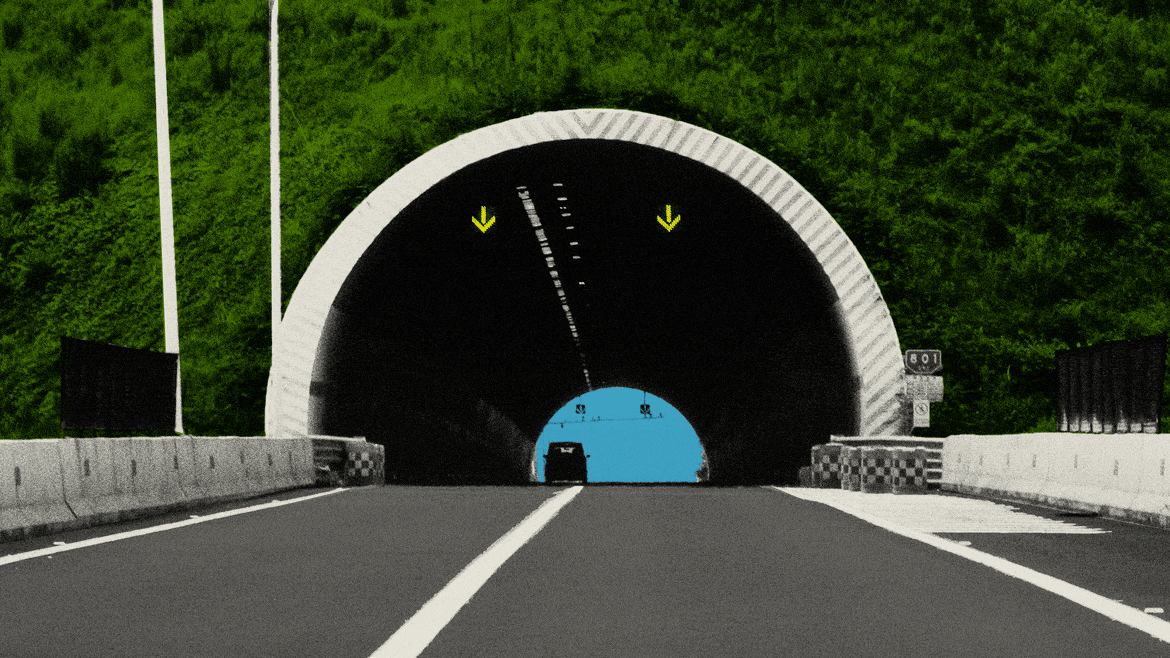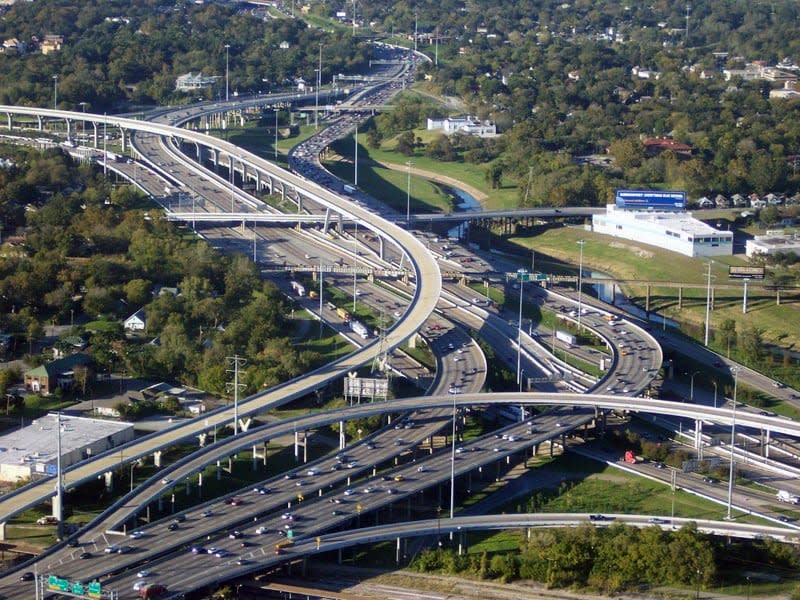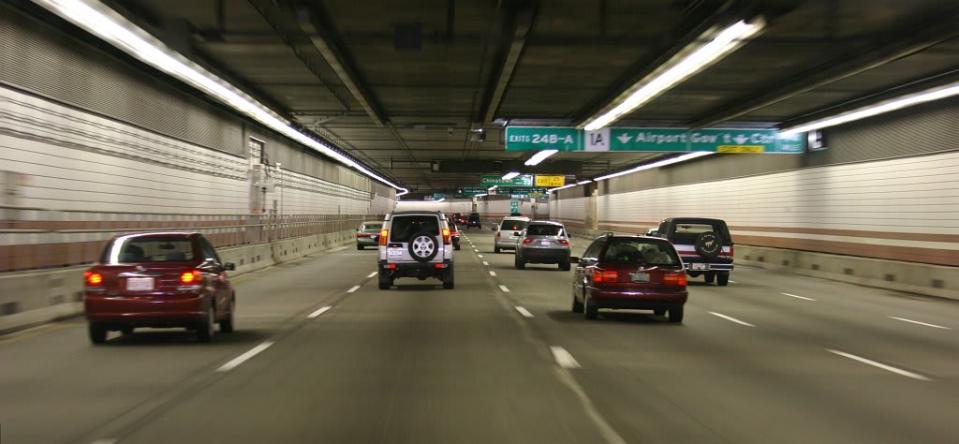Can Burying Urban Highways Undo Decades of Racial Inequity?

For New York City resident Nilka Martell, highway infrastructure is personal business. Martell leads a group called Loving The Bronx wants to bury—yes, literally bury—the infamous Cross-Bronx Expressway, which runs through dense neighborhoods in the South Bronx. A key trade route between New Jersey and Connecticut and Long Island, the Cross-Bronx Expressway attracts a flurry of 18-wheeler trucks every day, along with a massive amount of other automobile traffic.
The Bronx has the highest rates of pediatric asthma in the country, in part because of vehicle pollution that seeps into the air from this urban expressway. Martell’s son is one of the many children who make up that troubling statistic.
“I have two children. My son is the youngest. When I was pregnant with him, I actually lived in an apartment that was adjacent to an open portion on the highway,” Martell told The Daily Beast. “We would get this film [of exhaust] on our windows all the time.”
According to the EPA, 82 percent of all transportation emissions come from roadway users. That air quality is most affected within 500 feet of a highway.
Martell wants to bury the highway that she believes afflicted her child and others like him with chronic health issues, and prevent other families from having to suffer the same problems. Her campaign is part of a larger “cap and cover” movement that’s building across the country. The concept essentially calls for turning an open air urban expressway into a tunnel by capping it (if it’s already below ground level), and then “covering” the new tunnel with a plethora of real estate options. That could include building new parks, or new housing, or other kinds of low density development. The highway is not gone. It’s just underground—like driving through a long tunnel.
What If the Highway Could Charge Your Electric Vehicle?
That means that vehicle pollutants are not floating into the open air and directly impacting community health like in the Bronx. Because the highway is now a tunnel and not openly exposed, exhaust can be filtered through ventilation systems that can remove all kinds of toxins before they waft into the open air.
“Depending on where those [exhaust fans] are located, you have some filtration,” Paul Angelone, senior director for the Urban Land Institute, told The Daily Beast. “You're still going to have some pollution, but there would at least be less.”
In the New York City context, Martell is going a step further—she is working with the Department of City Planning to plant trees along the proposed cap and use natural plant life as a carbon dioxide filter for these covered roads.
Around the country, others are pushing for similar initiatives. In Seattle, activists are pushing the city government to add more green space to a roadway project already underway. In Austin, the city is actually working together with an activist group called Reconnect Austin to consider a combination of commercial development and parks on top of covered highways, although those plans are still in early phases.
The cap-and-cover movement is long overdue, especially when taking into account the racist effects brought about by many of America’s highways.
In 1956, Congress passed the Federal Aid Highway Act. New highways built from that massive influx in public works funding were purposely built through low income communities that were disproportionately communities of color. Many communities, like Atlanta, saw racial segregation physically exacerbated by new highways. In some cases, these communities were outright destroyed by new construction. Either way, highways made it easier for affluent and middle class white people to retreat to the newly created suburbia
Major roads continue to divide communities today, driving up the effects of climate change so they are more devastating to poorer minority communities, and facilitating an ongoing public health catastrophe. Activists like Martell argue that capping highways would allow cities and regions to have more control over highway emissions and lessen the public health burdens for vulnerable populations.
Besides improving air quality, there are some other valuable benefits to capping and covering highways. Since they aren’t directly exposed to the sun, these underground roadways would no longer contribute to urban “heat island” effects that raise the temperatures of cities during hotter months. Trees planted atop capped roadways could also help lower ambient temperatures, especially during severe heat waves—another direct effect of climate change and one that’s causing some cities in the U.S. to see average temperatures rise a staggering seven degrees
Spurred by alarming events like this, the U.S. Department of Transportation (DOT) has started moving forward with support for cap and bury plans for some federal highways. Late last year, Secretary of Transportation Pete Buttigieg awarded Rebuilding America's Infrastructure with Sustainability and Equity (RAISE) grants to several U.S. cities to cap highways, including in El Paso and Atlanta. Both projects were awarded $900,000 in funding.
In El Paso, the money will be used to bury a stretch of Interstate-10 running through the city’s downtown. A 12-acre park would be built on top of it. According to the DOT, the park would include “green space, public gathering space, and entertainment venues.”

I-45 near downtown Houston.
On the other side of the state in Houston, officials at the city, state, and federal levels are also considering plans to bury a section of the 1-45 highway near downtown where several major highways intersect—a challenging task in a city that also holds the single widest stretch of highway in the world at 26 lanes.
Last year’s RAISE grants are just a piece of the funding puzzle. The grant program started under the American Recovery and Reinvestment Act passed during the Obama Administration in 2009 as a discretionary fund. Thanks to the new $1.2 trillion bipartisan infrastructure law, the DOT has more money to offer projects like these moving forward.
A DOT spokesperson told The Daily Beast that no specific cities have been selected using the funding from the infrastructure law. However, Secretary of Transportation Pete Buttigieg has been traveling around the country raising awareness about the program, specifically visiting locales where many projects of note are either in the works or are actively discussed. Some of those include Syracuse, New York; Richmond, Virginia; and Austin.
It makes sense why Texas’ capital could be on the list. For more than a decade Austin has been one of the fastest growing cities in America. Yet its infrastructure has struggled to keep up with the significant population growth it has seen. I-35 is a particularly devastating example of how old highways can exacerbate racist policies and hurt minority communities for decades.
I -35, which divides Austin’s east and west sides, was built through communities of color back in the late 1950s. In fact, its construction effectively demolished those neighborhoods. Though Austin has experienced an incredible boom in population and business in the last two decades, its infrastructure wasn’t built to handle such rapid growth.
According to Reconnect Austin, there have been multiple proposals put forth about what to put on top of the covered highways, including housing, commercial buildings, and parks. Unfortunately, the Texas Department of Transportation and city planners do not want to cap the entire stretch of I-35. They would rather cap segments instead and leave others intact, Heyden Black Walker, co-founder of Reconnect Austin, told The Daily Beast. That means no air filtration, and only limited action toward helping reduce climate change contributions.
The advocacy group Lid I-5 has been pushing to bury the interstate that runs through Seattle, Washington. Since 2015, the group has pushed to bolster the sorely lacking green space in the city’s downtown. However, unlike Austin and New York, the topography in Seattle is significantly more challenging to these efforts.
“It is so dang hilly here,” Scott Bonjukian, co-chair of Lid I-5’s steering committee, told The Daily Beast. There are only limited parts of the freeway that can actually be considered for cap-and-cover, he said.
For Bonjukian, Walker, and other cap-and-cover advocates, Boston is their big inspiration. The city’s ambitious highway cap project, dubbed the “Big Dig,” buried much of a central artery of I-93 running through the heart of the city. After it was completed, carbon monoxide levels fell by a staggering 12 percent, which the Massachusetts Department of Transportation directly attributes to the project.
“In downtown Boston it’s made a huge difference in the experience of public space,” Eric Avila, a professor of history and urban planning at UCLA, told The Daily Beast. “Now, when you are in that part of Boston, you're not standing in the shadow of an elevated interstate freeway, you’re standing in the middle of a green park that’s now reconnecting neighborhoods that were formally separated or divided.”
However, that very same solution came with its own set of problems. It fast tracked the city’s gentrification. Parks help bring up much-needed environmental health remedies, but they also inevitably drive up property values, which actually ends up exacerbating the racial inequities the highways created in the first place.

The I-93 tunnel under Boston.
“I think you need to have a robust program of government oversight to make sure that the effects of gentrification do not further disadvantage communities that have already been hit hard by highway construction and red lining,” Avila added.
“When we look at other cities that have successfully done this [capping highways] the first thing that we’re concerned with is the further displacement of people,” Martell said
But there may be a new national model that could help mitigate those concerns. In Southern California there are new programs that offer reparations descendants of those displaced by highway construction. Santa Monica launched such a program in January. Applicants had to show property deeds that proved they were displaced or descended from those displaced by such construction.
Unfortunately, the reparations program approved applications based on a lottery system, which was poorly received in the community. The program, while it is a start, only provided limited resources, it caps the households that can seek reparations at this juncture, and it also does not account for the small businesses that were shut down because of the highway construction back in the ’50s and ’60s.
Clearly there are some kinks that need to be worked out. However it is a step—a blueprint for other jurisdictions to build on and improve. A program like this could be exactly what helps the cap and cover momentum to swell into a tidal wave that sweeps the country. For people like Martell, that sweep can’t come soon enough.
Correction 5/18/22: The bipartisan infrastructure law provides $1.2 trillion in funding, not $1 billion. We regret the error.
Get the Daily Beast's biggest scoops and scandals delivered right to your inbox. Sign up now.
Stay informed and gain unlimited access to the Daily Beast's unmatched reporting. Subscribe now.

